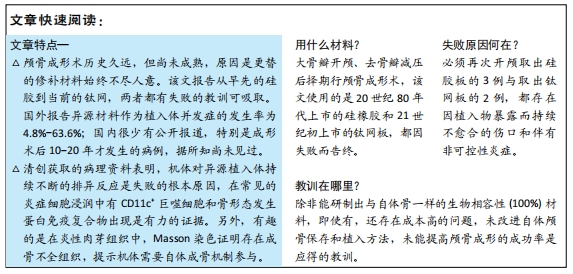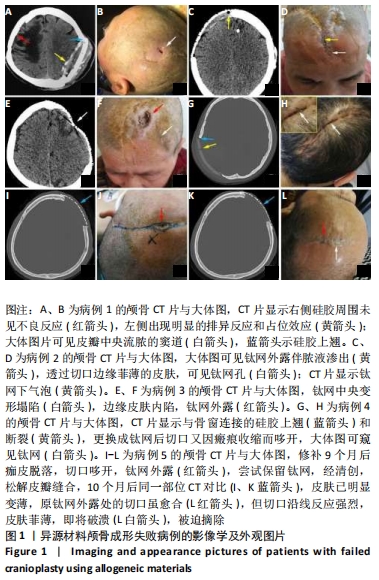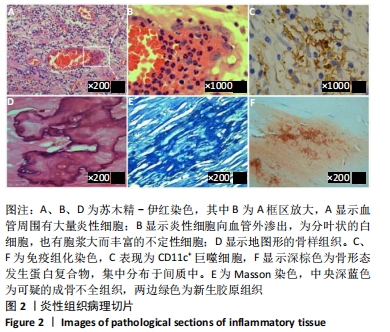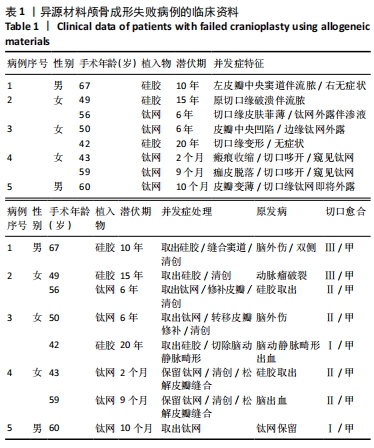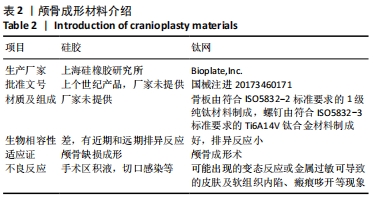[1] CAROD-ARTAL FJ, AND VAZQUEZ-CABRERA CB. Neurological paleopathology in the pre-Columbine cultures of the coast and the Andean plateau (II). The history of cranial trepanations. Rev Neurol. 2004;38(9):886-894.
[2] SEYDEL H. Eine neue Methode, grosse Knochendefekte des Scädels zu decken. Centralbl Chir. 1889;12:209.
[3] GURDJIAN ES, WEBSTER JE, BROWN JC. Impression technique for reconstruction of large skull defects. Surgery. 1943;14:876-881.
[4] MANSON PN, CRAWLEY WA, HOOPES JE. Frontal cranioplasty: risk factors and choice of cranial vault reconstructive material. Plast Reconstr Surg. 1986; 77(6):888-904.
[5] WILLIAMS L, FAN K, BENTLEY R. Titanium cranioplasty in children and adolescents. J Craniomaxillofac Surg. 2016;44(7):789-794.
[6] 张全斌,兰青,朱文昱,等.颅脑损伤后自体颅骨修补术的临床探讨(附32例报告)[J].中国临床神经外科杂志,2005,10(6):438-440.
[7] MOREIRA-GONZALEZ A, JACKSON I T, MIYAWAKI T, et al. Clinical outcome in cranioplasty: critical review in long-term follow-up. J Craniofac Surg. 2003;14(2):144-153.
[8] FEARON JA, GRINER D, DITTHAKASEM K, et al. Autogenous Bone Reconstruction of Large Secondary Skull Defects. Plast Reconstr Surg. 2017; 139(2):427-438.
[9] JONKERGOUW J, VAN DE VIJFEIJKEN SE, NOUT E, et al. Outcome in patient-specific PEEK cranioplasty: A two-center cohort study of 40 implants. J Craniomaxillofac Surg. 2016;44(9):1266-1272.
[10] MUNDINGER GS, LATHAM K, FRIEDRICH J, et al. Management of the Repeatedly Failed Cranioplasty Following Large Postdecompressive Craniectomy: Establishing the Efficacy of Staged Free Latissimus Dorsi Transfer/Tissue Expansion/Custom Polyetheretherketone Implant Reconstruction. J Craniofac Surg. 2016;27(8):1971-1977.
[11] SCHUSS P, VATTER H, OSZVALD A, et al. Bone flap resorption: risk factors for the development of a long-term complication following cranioplasty after decompressive craniectomy. J Neurotrauma. 2013;30(2):91-95.
[12] SUNDSETH J, SUNDSETH A, BERG-JOHNSEN J, et al. Cranioplasty with autologous cryopreserved bone after decompressive craniectomy: complications and risk factors for developing surgical site infection. Acta Neurochir (Wien). 2014;156(4):805-811;discussion 811.
[13] ZAED I, TINTERRI B. Comparison of complications in cranioplasty with various materials: a systematic review and meta-analysis. Br J Neurosurg. 2020. doi:10.1080/02688697.2020.1814995
[14] GIESE H, MEYER J, UNTERBERG A, et al. Long-term complications and implant survival rates after cranioplastic surgery: a single-center study of 392 patients. Neurosurg Rev. 2020. doi:10.1007/s10143-020-01374-4
[15] ROSENGREN A, BJURSTEN LM, DANIELSEN N, et al. Tissue reactions to polyethylene implants with different surface topography.J Mater Sci Mater Med. 1999;10(2):75-82.
[16] BRAs NEMARK J, LAUSMAA L E, ERICSON P, et al. In: Fonseca RJ, and Davies WH eds. Reconstructive preprosthetic oral and maxillofacial surgery. Saunders, Philadelphia, PA: W.B. Saunders Company; 1986:165.
[17] BORRELLI MR, HU MS, HONG WX, et al. Macrophage Transplantation Fails to Improve Repair of Critical-Sized Calvarial Defects. J Craniofac Surg. 2019;30(8): 2640-2645.
[18] ZHANG J, WANG L, CHU J, et al. Macrophage-derived neurotrophin-3 promotes heterotopic ossification in rats. Lab Invest. 2020. doi:10.1038/s41374-019-0367-x.
[19] LEE JWY, AND BANCE ML. Physiology of Osseointegration. Otolaryngol Clin North Am. 2019;52(2):231-242.
[20] TENG FY, TAI IC, HO ML, et al. Controlled release of BMP-2 from titanium with electrodeposition modification enhancing critical size bone formation. Mater Sci Eng C Mater Biol Appl. 2019;105:109879.
[21] LEE JH, CHOUGH CK, CHOI HJ, et al. Bone Flap Changes after Cranioplasty Using Frozen Autologous Bone Flaps: A Three-Dimensional Volumetric Reconstruction Study. Yonsei Med J. 2019;60(11): 1067-1073.
[22] CABBAD NC, STALDER MW, ARROYAVE A, et al. Autogenous Bone Cranioplasty: Review of a 42-Year Experience by a Single Surgeon. Plast Reconstr Surg. 2019;143(6):1713-1723.
|
